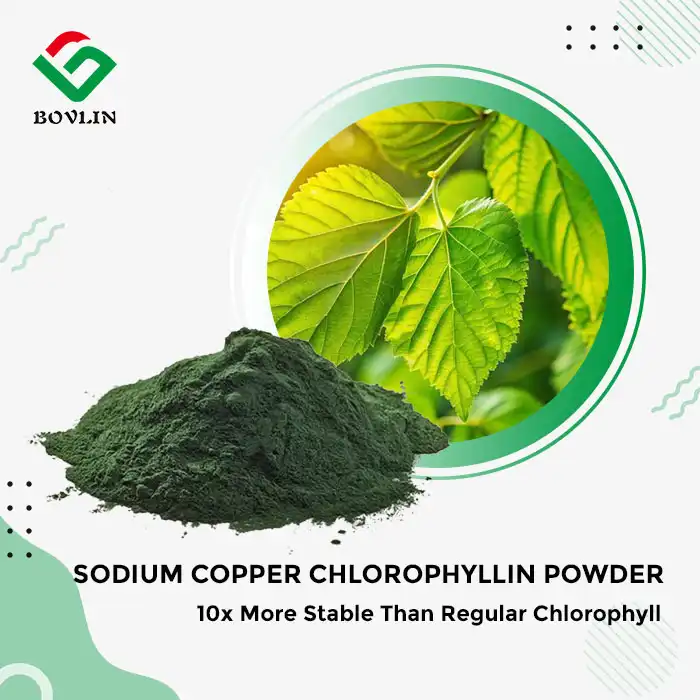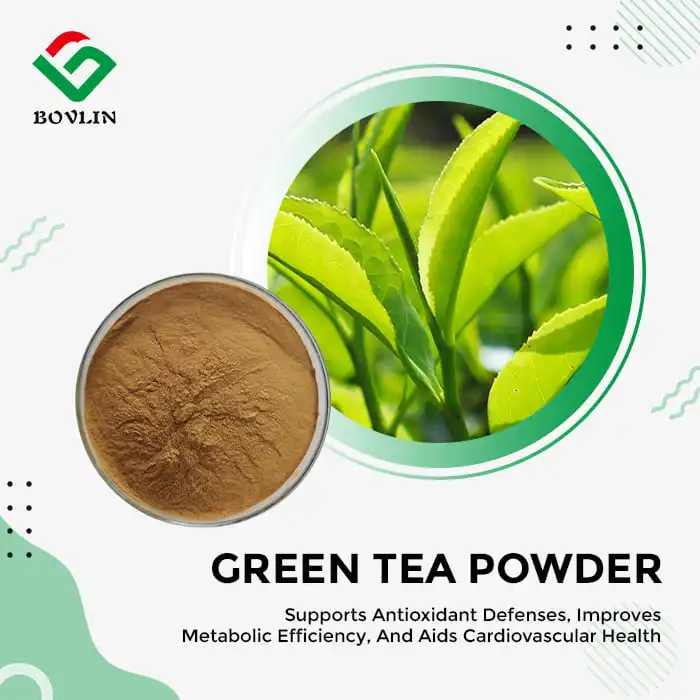What Are the Key Nutritional Differences Between Oolong and Matcha?
Polyphenol Composition
Oolong tea powder and matcha exhibit distinct polyphenol profiles due to their differing production processes. Oolong undergoes partial oxidation, resulting in a unique blend of catechins and theaflavins. This process yields a diverse array of polyphenols, including EGCG, ECG, and theasinensins. Matcha, being shade-grown and stone-ground, retains higher levels of catechins, particularly EGCG. The polyphenol composition of oolong tea powder offers a broader spectrum of antioxidants, while matcha provides a concentrated source of specific catechins.
Amino Acid Content
Amino acid profiles vary significantly between oolong tea powder and matcha. Matcha is renowned for its high L-theanine content, an amino acid associated with promoting relaxation and mental clarity. The shade-growing process of matcha tea plants enhances L-theanine production. Oolong tea powder, while containing L-theanine, typically has lower levels due to its oxidation process. However, oolong tea powder may offer a more diverse amino acid profile, including compounds like gamma-aminobutyric acid (GABA), which is formed during the partial oxidation process.
Mineral and Vitamin Composition
Both oolong tea powder and matcha are sources of essential minerals and vitamins, but their concentrations differ. Matcha, being a whole-leaf powder, generally contains higher levels of minerals such as potassium, calcium, and iron. It also boasts elevated vitamin content, particularly vitamin C and various B vitamins. Oolong tea powder, while not as concentrated in these nutrients, still provides a notable array of minerals and vitamins. The partial oxidation of oolong may lead to the formation of unique compounds not present in matcha, contributing to its distinct nutritional profile.
Antioxidant Levels and Caffeine Content Comparison
Total Antioxidant Capacity
The antioxidant potential of oolong tea powder and matcha is a crucial factor for manufacturers considering their use in functional food and beverage products. Matcha is widely recognized for its exceptionally high antioxidant content, primarily due to its cultivation and processing methods. The shade-growing technique increases chlorophyll and L-theanine production, contributing to matcha's potent antioxidant profile. Oolong tea powder, while not as concentrated as matcha, offers a unique antioxidant composition due to its partial oxidation. This process creates a blend of catechins and theaflavins, providing a diverse antioxidant spectrum. When measuring total antioxidant capacity, matcha typically scores higher, but oolong tea powder's complex antioxidant profile may offer distinct benefits in certain applications.
Specific Antioxidant Compounds
Delving deeper into the antioxidant profiles, instant oolong tea powder and matcha showcase different dominant compounds. Matcha is particularly rich in catechins, especially epigallocatechin gallate (EGCG), which is renowned for its potential health benefits. The concentration of EGCG in matcha can be significantly higher than in other tea forms. Oolong tea powder, due to its partial oxidation, contains a mix of catechins and theaflavins. This unique combination includes compounds like theasinensins and EGCG dimers, which are not typically found in unoxidized teas. These specific antioxidants in oolong tea powder may offer distinct functional properties in food and beverage applications.
Caffeine Levels and Stimulant Effects
Caffeine content is a critical consideration for manufacturers developing products with these tea powders. Matcha generally contains higher levels of caffeine compared to instant oolong tea powder. This is primarily due to the consumption of whole leaves in matcha, as opposed to the traditional brewing method of oolong. However, the caffeine in matcha is often described as providing a more sustained energy boost, possibly due to its interaction with L-theanine. Oolong tea powder typically offers a more moderate caffeine content, which can be advantageous in products aimed at providing gentle stimulation. The partial oxidation of oolong may also influence how its caffeine is metabolized, potentially offering a unique stimulant profile that differs from both green and black teas.

Market Trends and Application Preferences in Food & Beverage
Consumer Demand and Product Innovation
The food and beverage industry has witnessed a surge in demand for functional ingredients, with oolong tea powder and matcha at the forefront of this trend. Matcha has experienced widespread popularity, particularly in Western markets, due to its vibrant color and perceived health benefits. Its application has expanded beyond traditional tea preparations to include a wide array of products such as lattes, smoothies, and baked goods. Oolong tea powder, while not as ubiquitous as matcha, has been gaining traction in the functional beverage sector. Its unique flavor profile and potential health benefits have led to increased interest from manufacturers looking to differentiate their products. The versatility of both powders has sparked innovation in ready-to-drink beverages, nutritional supplements, and even cosmetic applications.
Flavor Profile and Culinary Applications
The distinct flavor characteristics of instant oolong tea powder and matcha significantly influence their application in food and beverage products. Matcha offers a rich, umami flavor with slight bitterness and a vibrant green hue, making it a popular choice for visual appeal in various culinary creations. Its intense flavor profile allows for versatile use in both sweet and savory applications. Oolong tea powder, with its complex and nuanced taste, ranging from light and floral to rich and roasted depending on the oxidation level, provides manufacturers with a unique flavor palette. This complexity makes oolong tea powder particularly suitable for sophisticated beverage blends and as a subtle flavor enhancer in food products. The choice between the two often depends on the desired flavor intensity and color impact in the final product.
Regional Preferences and Market Penetration
Regional market trends play a crucial role in the adoption of oolong tea powder and matcha in food and beverage applications. Matcha has seen significant growth in North American and European markets, driven by the popularity of Japanese cuisine and the global wellness trend. Its visual appeal and perceived health benefits have led to widespread acceptance in these regions. Oolong tea powder, traditionally more popular in Asian markets, is gradually gaining recognition in Western countries. Its subtle flavor and potential health benefits are attracting manufacturers looking to cater to consumers seeking alternatives to the more familiar green and black tea options. The increasing global interest in diverse tea experiences is opening new opportunities for both oolong tea powder and matcha across various regional markets, influencing product development strategies for international food and beverage companies.
Conclusion
The comparison between oolong tea powder and matcha reveals distinct advantages for each in the food and beverage industry. Matcha offers high antioxidant content, vivid color, and strong flavor, making it ideal for visually appealing and potent functional products. Oolong tea powder provides a more nuanced flavor profile and a unique blend of antioxidants, suitable for subtle flavor enhancement and diverse health applications. The choice between the two depends on specific product goals, target market preferences, and desired functional properties. Both powders present valuable opportunities for innovation in the functional food and beverage sector, catering to the growing consumer demand for healthful, natural ingredients.
Contact Us
Are you looking to innovate with premium tea powders in your product line? Shaanxi Bolin Biotechnology Co., Ltd. offers high-quality oolong tea powder and other plant extracts for your food and beverage applications. Contact us at sales1@bovlin.com to explore how our products can enhance your offerings and meet the growing demand for functional ingredients.











